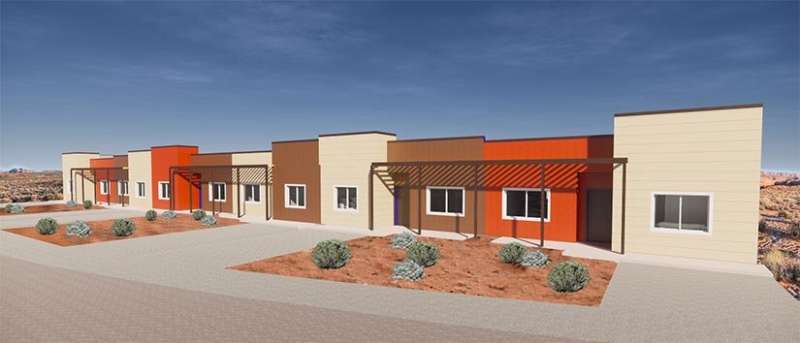Addressing energy challenges of housing health care professionals on remote IHS and US tribal lands

The Indian Health Service (IHS) serves 2.6 million American Indians and Alaska Natives annually on a mission to raise physical, mental, and spiritual health. One of the biggest hurdles is staffing.
Many IHS facilities are so remote that attracting talented and experienced health care professionals is difficult. To bolster recruitment and retention, the IHS provides housing options for its more than 15,000 staff members and their families. But in remote, rural areas, meeting federal sustainability goals for IHS facilities and housing developments poses its own set of unique challenges.
Through a new partnership, the agency will tap the National Renewable Energy Laboratory’s (NREL’s) energy-efficient-building experts to develop a comprehensive set of design recommendations for new residential buildings across various locations on IHS and U.S. Tribal lands.
Along with energy efficiency measures, NREL will consider renewable energy technology options such as cost-effective rooftop photovoltaic panels and solar-hot water, as many Tribal lands have high technical and economic potential for renewable generation.
The Mission Drives What Mandates Prescribe
Adhering to federal energy efficiency and renewable energy guidelines for new construction projects is complex in remote settings. IHS embraces them as an opportunity to lead.
“The implementation of sustainable practices at the IHS is shaped by federal laws and regulations, but the concept is true to our mission and our responsibility to ensure the well-being of the environment in which we work,” said IHS Division of Engineering Services architect and sustainability coordinator Alex D. Gamble, AIA LEED AP BD+C. “IHS strives to not only meet all federal requirements but also to be forward-acting on all environmental efforts and improvements to human health to ensure these principal considerations are introduced at the earliest stages possible.”
Through its partnership with NREL, the IHS aims to reduce energy consumption of its residential facilities by 30% compared to code minimum standards.
Modeling the Optimal Energy Mix
In support of that goal, NREL researchers will first create baseline building energy models that represent prototypical building designs across a variety of climate zones. Then, the research team will use BEopt software to identify an optimized mix of energy efficiency and renewable energy measures for creating cost-optimal packages that cut energy use by a minimum of 30%.
Each building and location combination will be modeled over a 40-year period for optimization. The project will also simulate extreme hot and cold weather scenarios to explore how design decisions may influence building resilience. The resulting product will be a design guide for best practices to improve energy performance of new buildings in the specified regions.
Replicable Results for Other Remote Areas
Remote areas in the U.S., including those in which IHS facilities are located, face barriers to energy efficiency technologies such as geographic isolation, workforce availability, up-front costs, and awareness,” said Andrew Speake, research engineer in NREL’s Building Technologies and Science Center.
Although the primary objective of this project is to improve the energy performance of new residential buildings on Tribal lands, the results will help advance broader U.S. energy efficiency goals.
Current federal guidance, outlined in Guiding Principles for Federal Leadership in High Performance and Sustainable Buildings, was issued by the White House Council on Environmental Quality to help advance sustainable building practices of all new and existing federal buildings.
“Through the unique capabilities at NREL, our team will create building energy models that will result in a design guide that can be used on IHS and U.S. Tribal lands and can be emulated to apply to other remote locations such as military bases,” Speake added.
Researchers point toward energy efficiency instead of long-term storage
Citation:
Addressing energy challenges of housing health care professionals on remote IHS and US tribal lands (2022, February 17)
retrieved 17 February 2022
from https://techxplore.com/news/2022-02-energy-housing-health-professionals-remote.html
This document is subject to copyright. Apart from any fair dealing for the purpose of private study or research, no
part may be reproduced without the written permission. The content is provided for information purposes only.
For all the latest Technology News Click Here
For the latest news and updates, follow us on Google News.
